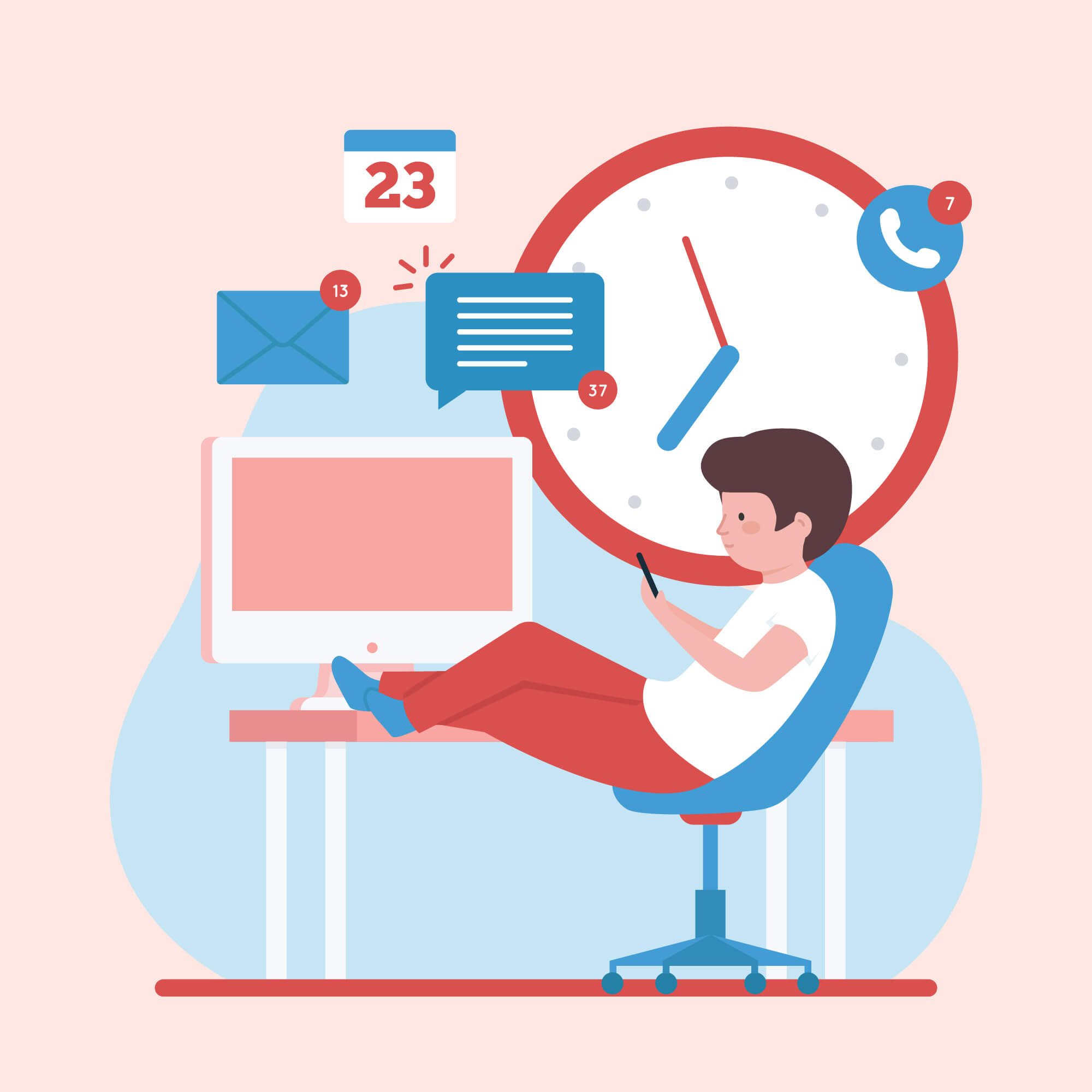:quality(80)/bucket-prod.jecreemavitrine.fr/uploads/sites/151/2025/07/7534052_3694080-1.jpg)
The Psychology of Notification Timing: When Are Customers Most Likely to Engage?
In an era where attention spans are short and competition for screen time is fierce, push notifications have become an essential tool for brands to stay connected with users. But sending a message isn’t enough the timing of that message is what makes all the difference. Understanding the psychology of notification timing helps marketers reach users at just the right moment, boosting user engagement, increasing app usage, and ensuring your brand stands out in a crowded digital landscape.

Designed by Freepik
Table of contents
Why notification timing matters
Push notifications are direct, real-time messages sent to a user’s device, whether it’s via web push notifications, mobile push notifications, or in-app messages. But just sending them isn’t enough. You must send push notifications at the right moment, when users are attentive and receptive.
Poorly timed push campaigns can lead to decreased opt-in rates, low engagement, and even app deletions. On the flip side, timely notifications can improve push notification performance, encourage users to return, and drive conversions.
The psychology behind notification timing
Users behave differently depending on the time of day, their habits, and even the operating system they use. Here are some key psychological principles that affect how push notifications work:
1. Habitual checking behavior
Most smartphone users check their phones during transitions, waking up, commuting, breaks, or before bed. By aligning your push notification strategy with these moments, you’re more likely to engage users effectively.
2. Decision fatigue
Sending push messages late in the day when decision fatigue kicks in can reduce conversion rates. Instead, aim to send personalized messages in the morning or early afternoon when users are fresh.
3. Sense of urgency
Notifications that create urgency tend to perform better. Use language like “limited time offer” or “ending soon” in marketing messages to trigger quick action.
Best times to send push notifications
Here’s when your users are most likely to receive push notifications and respond:
- Morning (8 AM – 10 AM): Ideal for news, updates, and alerts. The lock screen is often the first thing users see.
- Lunch breaks (12 PM – 2 PM): Great for app updates, rich media promotions, or reminders.
- Evening (7 PM – 9 PM): Best for re-engaging users, especially with personalized push notifications or location-based push notifications.
Pro tip: Always A/B test your push notification campaign timings based on your audience segment and valuable customer data.
Push notifications best practices
Follow these push notifications best practices to boost engagement:
- Personalize push notifications using customer data and user behavior insights.
- Use a strong call to action (CTA) to drive clicks.
- Make sure users have push notifications enabled and easy access to change push notification preferences.
- Avoid spamming. Respect the user’s time and attention span.
- Combine push with cross-channel marketing platforms for a holistic marketing strategy.
- Deliver content that fits within the notification center without requiring a full app open.
Optimizing push notification strategy by device
Different platforms behave differently:
- iOS users must opt in manually, making it critical to craft an effective opt-in message.
- Android users usually have push notifications enabled by default but can disable them if overwhelmed.
- Web push strategies require visible icons and timely browser icon prompts to encourage engagement.
Enhance engagement with the right tools
To maximize success, consider using reliable push notification software to segment users, track performance, and schedule optimal delivery times. These platforms can help automate and personalize your push strategy while ensuring compliance with user preferences.
Final thoughts
Understanding the psychology of notification timing is crucial to ensuring your push notifications don’t go unnoticed. By aligning your push messages with user habits, behaviors, and preferences, you can not only increase engagement but also build trust.
Whether you’re reaching mobile users, encouraging an app installed audience, or aiming to re-engage users, success lies in how well you use push notifications, not just if you use them.
At Atlas Communication, we help you craft data-driven, human-centered push notification strategies that convert. Ready to elevate your notification marketing?
Let’s connect and optimize your push performance today.
FAQs
Q1. What are the different types of push notifications?
A: There are web push notifications, mobile push notifications, in-app messages, and app push notifications, each with unique use cases and benefits.
Q2. How can I encourage users to enable push notifications?
A: Craft a clear, value-driven opt-in message, offer choices in notification preferences, and highlight the benefits of receiving updates.
Q3. Are push notifications better than SMS messages?
A: Both have their advantages. Push notifications are often free and immediate, while SMS messages can be more direct but are limited in content and costlier.
Q4. Can push notifications improve app engagement?
A: Yes! With targeted messages and personalized content, they can drive app usage, improve user engagement, and reduce churn.
Get in Touch with Us
:quality(80)/bucket-prod.jecreemavitrine.fr/uploads/sites/151/2024/10/Atlas-logo.png)
:quality(80)/bucket-prod.jecreemavitrine.fr/uploads/sites/151/2025/07/sale.jpg)
:quality(80)/bucket-prod.jecreemavitrine.fr/uploads/sites/151/2024/10/Atlas-logo.png)
:quality(80)/bucket-prod.jecreemavitrine.fr/uploads/sites/151/2025/07/21861560_6501724-1.jpg)
:quality(80)/bucket-prod.jecreemavitrine.fr/uploads/sites/151/2025/12/11671924_13200-1.jpg)